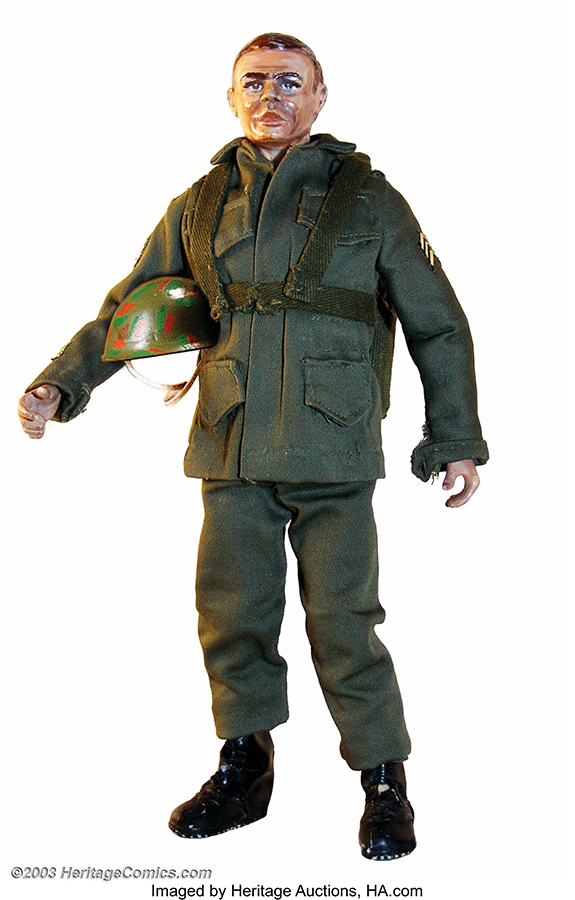WHEN AMASSING A COLLECTION OF TOYS TURNED INVESTMENT PIECES, KNOWING WHAT TO LOOK FOR IS HALF THE BATTLE
By Rhonda Reinhart
When Hasbro debuted G.I. Joe in 1964, the Rhode Island-based toy company couldn’t have known that “America’s Movable Fighting Man” would revolutionize the toy industry. But that he did. The 12-inch posable military-themed doll became the world’s first action figure, a concept that would be remade and re-revolutionized time and again.
After G.I. Joe came the 1970s introductions of the World’s Greatest Super-Heroes line by Mego and the wildly successful Star Wars action figures by Kenner, the latter notable for launching the now-standard 3.75-inch figures familiar to generations. Following those releases were Masters of the Universe, Transformers, Micronauts, Teenage Mutant Ninja Turtles and a host of other action-based toys in the 1980s and ’90s.
Today collectors clamor for pristine versions of these childhood favorites – their friends in plastic that rekindle happy memories and hearken back to a time when life was nothing but possibilities. “Few things generate that universal sense of nostalgia like toys,” says Zach Kirkpatrick, Collectibles Specialist at Heritage Auctions. “It’s a collecting hobby that crosses all generational gaps because almost everyone can appreciate these vintage treasures.”
Xavier Chavez, Consignment Director at Heritage Auctions, notes that there are two groups of action figure collectors. “You have the older generation that collects Mego figures and 12-inch G.I. Joes,” he says. “But the newer generation focuses on the decade of innovation that happened between the late ’70s and early ’90s. That explosion in that 15-year span is pretty much the core of what we consider valuable toys today.”
But not all action figures are created equal. No matter the era, franchise or type of figure, a variety of factors can affect the value of these in-demand collectibles.
Enlarge
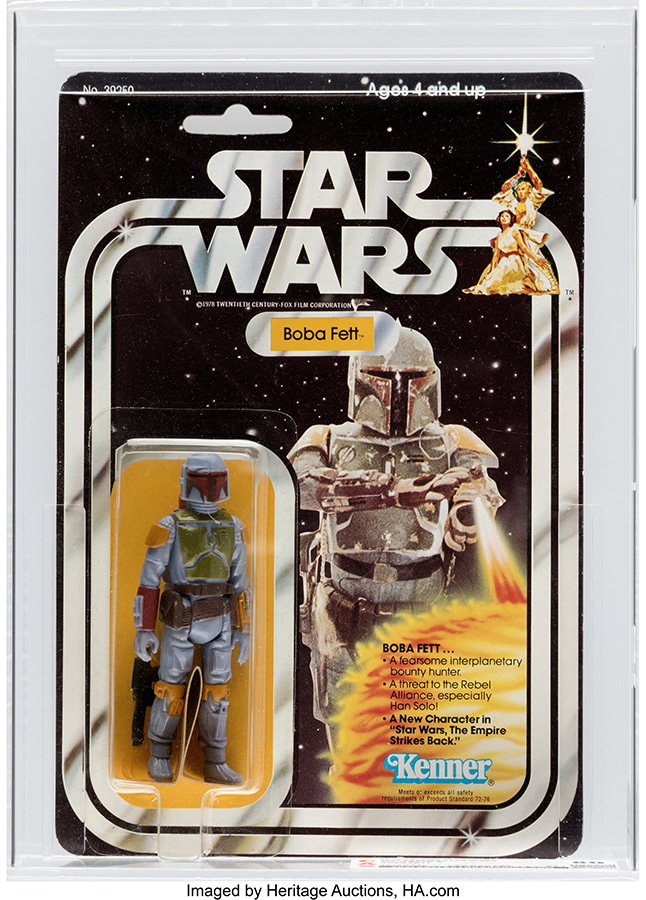
Be Aware of Variants
Many action figures come in different versions, known as variants, and rarer variants can garner higher prices. “Sometimes a variant denotes how early in the production a toy is,” Kirkpatrick says, “and sometimes it just denotes a unique combination of variations that are uncommon among the rest of the productions.” One legendary variant from the Star Wars franchise is the Luke Skywalker action figure with a double-telescoping lightsaber. The 1978 release was quickly discontinued due to manufacturing issues and replaced with a single telescope. As a result, DT Lukes (one of which will be available in a Heritage auction in the first quarter of 2023) are exceedingly rare and are much more valuable than simpler versions with a single-telescoping lightsaber. While some variants are intentional creations by the manufacturer, others are factory errors, such as a figure placed in the wrong packaging, one placed upside down in its package or one painted in the wrong colors. “Some errors can actually make a figure more desirable,” says Jesus Garcia, Consignment Director at Heritage Auctions. “One great example is the Masters of the Universe Faker figure with Skeletor arms instead of the usual He-Man arms. Only a small number of these were made, so they’re much harder to find than the version of the figure that was intended.”
Enlarge
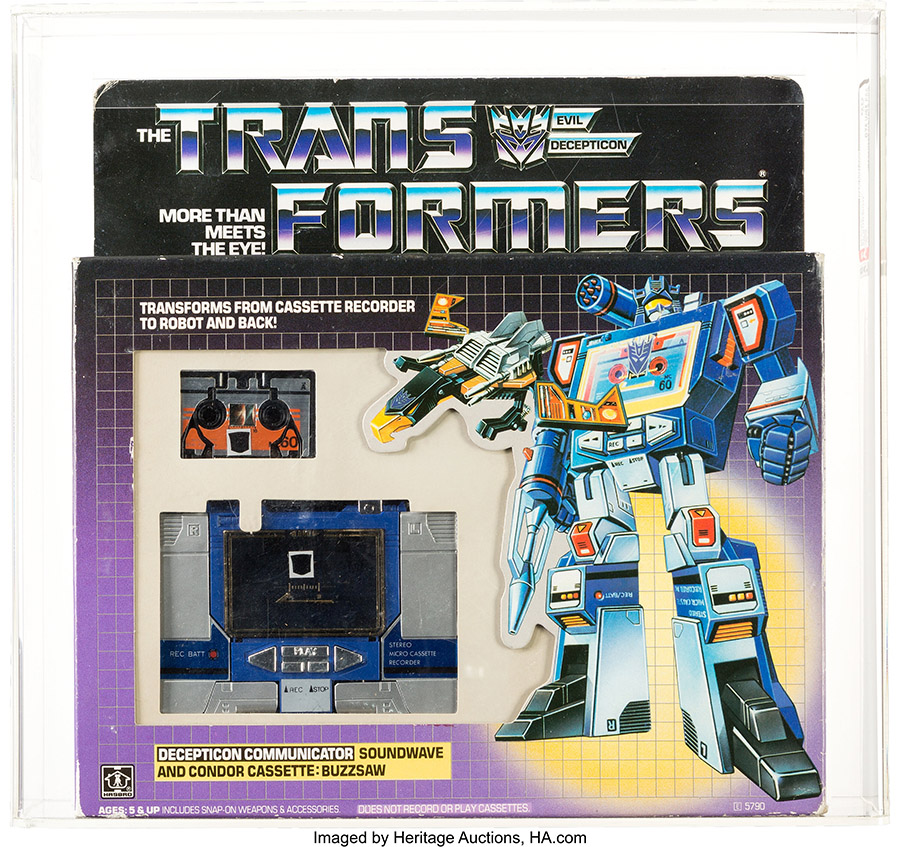
Don’t Break the Seal
In general, sealed action figures are more desirable than loose figures, and the same goes for playsets and vehicles. Opened items sell for significantly less than ones in their original factory-sealed packaging, and the best-condition packages (meaning the cardboard backing is in good shape and the protective bubble that holds the figure is clear) command a higher premium. However, as long as the plastic bubble is clear, even slightly worn cards remain desirable. “Finding a vintage figure Mint on Card (MOC) from the ’80s is becoming increasingly difficult,” Kirkpatrick says. “And older carded figures, like ones from the Mego World’s Greatest Super-Heroes line, are incredibly difficult to find with a clear bubble.” But, as Chavez notes, there is a market for loose figures: “Some people buy the in-package action figures for display purposes, but then also some unpackaged ones so they can re-create scenes with the figures.”
Enlarge

Know What Makes the Grade
Though several companies grade toys, the primary grading companies are Collector Archive Services (CAS) and Action Figure Authority (AFA). These services grade everything from loose action figures to large playsets, and they focus on three things when grading: the card, the bubble and the figure itself. Each category is assigned a grade, based on factors such as edge wear, creasing, staining, cracking on the plastic and damage to the figure, all of which are considered when determining the final grade. “Importantly, the grade is not averaged across the three subgrades,” Kirkpatrick says. “Often, the grade is reflected more along the lines of the lowest grade among the three.” Heritage Auctions offers both graded and ungraded action figures. “One reason we sell ungraded figures is because the older action figures weren’t carded with a bubble,” Garcia says, “so you can’t see them if they’re encapsulated. For that reason, collectors of those figures aren’t concerned with grading.”
Enlarge
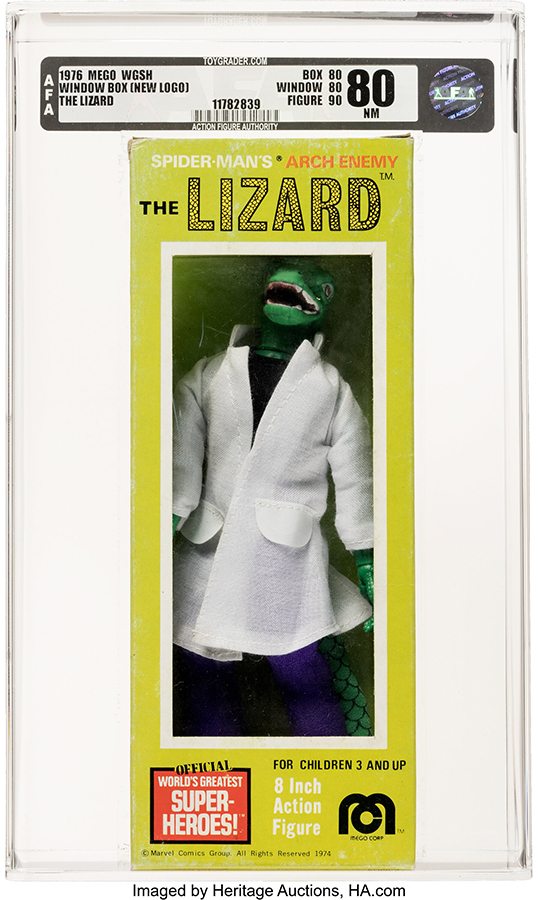
Make Proper Storage a Priority
Whether you’re storing or displaying your action figures, doing so properly is crucial to keeping the value of your collection. The plastic bubbles on carded figures will inevitably yellow over time, causing them to become brittle. “The cases that the grading companies use to encapsulate action figures are not UV protected,” Chavez says. “So if you display your figures in direct sunlight, that sunlight is going to deteriorate the bubbles faster than if you keep them out of the light.” It’s also best to store or display your collection in a temperature-controlled space, as humid conditions can lead to mold and other damage to the cardboard backing and the figures themselves.
Enlarge
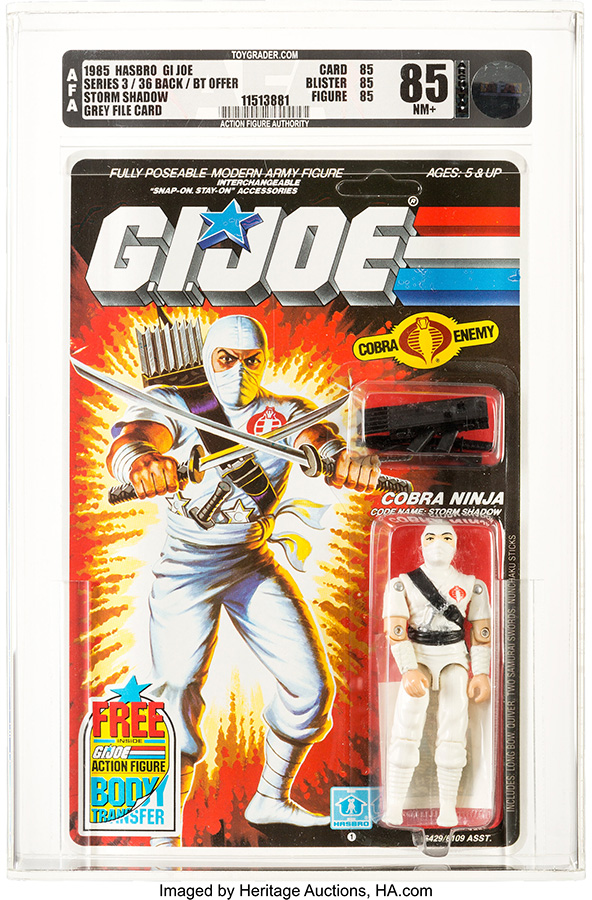
Don’t Forget To Have Fun
Though toy collecting is serious business these days, and top-notch action figures can garner top dollar, it’s important to not lose sight of what drew you to these collectibles in the first place. For Chavez, for instance, his battle-scarred action figures hold just as much value as their far costlier Mint on Card counterparts. “Everyone had a special or memorable toy at some point in their life, and we all have that figure that brings a gleam to our eye,” he says. “For me, it was Optimus Prime as I loaded up his trailer with G.I. Joes on the mission to stop the Masters of the Universe from taking over the battlefield. Needless to say, my toys are the ones you call ‘well loved.’ However, I would not trade MOC copies for the wonderful memories of playing with them.”
Heritage Auctions’ Action Figures and Toys: Featuring the TMNT Collection of Mark Freedman Showcase Auction takes place October 29. For inquiries, contact Xavier Chavez at XavierC@HA.com or 214-409-1559 and Jesus Garcia at JesusG@HA.com or 214-409-1827.
 RHONDA REINHART is editor of Intelligent Collector.
RHONDA REINHART is editor of Intelligent Collector.


